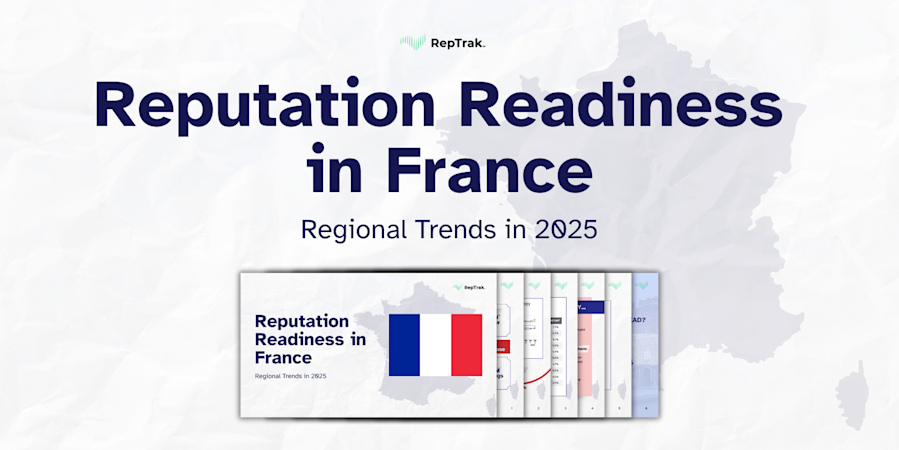The Changing Role of the Chief Communications Officer
Blog Post17 Apr, 2020
Even before the global COVID-19 pandemic, the role of Chief Communications Officer (CCO) was evolving. The outbreak—and how brands have responded to it—sheds light on the importance of how organizations interact with and inform stakeholders, retain loyalty, and drive financial performance.
“The CCO plays a critical role in advancing corporate reputation and helping the company to navigate business, economic, cultural, and societal trends,” says Karen Kahn, Chief Communications Officer at HP.
Indeed, today’s communications leader shepherds an expanding set of responsibilities and activities, extending beyond the rather narrow scope of work the position used to oversee. This marks a departure from the traditional role of “polishing the brand to protecting the brand.”
The evolution was fueled in no small part by the rise of social media, which dramatically changed the rules. It’s much harder today for gatekeepers in the communications or PR group, and mass media outlets, to control the message. Customers and other stakeholders now exert huge influence over a brand's reputation.
As a result, communications leaders now take on additional responsibilities that enable them to compel brand loyalty and anticipate and mitigate reputational risk.
New responsibilities for CCOs
Traditionally, communications leaders are responsible for executive communications, media and investor relations, issues and crisis management, community relations and philanthropy, events management, and, of course, corporate communications. Some communications leaders also oversee internal communications.
Today, that list has grown, and can also include:
Message creation and alignment
Reputation management
Leadership on purpose, vision, values, and culture
Social media and content marketing
Thought leadership
Strategic consulting and planning
Data analysis and operationalization
Customer satisfaction and Lifetime Customer Value (LCV)
Let’s take a closer look at a few of these critical new responsibilities:
Reputation management. There’s a reason why the CCO is often thought of as the Chief Reputation Officer: “The Chief Communications Officer is the person managing our reputation, including PR, external affairs, and social media,” says C. David Minifie, Chief Experience Officer and Executive Vice President of Corporate Strategy at Centene Corporation. Thoughtful and effective communications about a company’s positive efforts reinforce a positive reputation and drive financial performance. In fact, our data shows that a one-point increase in reputation score yields a 2.6 percent increase in market cap. For a typical corporation, that can translate into $1 billion per reputation point. Additionally, a strong organizational reputation differentiates your organization from the competition, supports talent acquisition and retention, and boosts crisis management and post-crisis recovery. Accordingly, then, the CCO often is the one leading the measurement of reputation, harnessing the data, and championing action that will affect key reputation drivers.
Alignment and integration. CCOs create and manage messages that support their company’s mission, vision, and values, and deliver them to internal and external audiences with differing needs, motivators, and perspectives. The need to align and integrate messaging across the organization requires collaboration with internal clients and the ability to speak to various stakeholders. Getting the balance right within multiple communication channels and audience segments is a core goal that engages many parts of the business, including less-obvious areas like facilities management and logistics. Leaders who came up through the PR or communications ranks now leverage their experience and relationships from the C-Suite.
Customer satisfaction and LCV. The communications function has evolved from being focused on image (the idea people have of the brand) to reputation (what people think about your brand). Telling the story of how an organization delivers on its purpose and promise is a key tool in creating a competitive advantage, holding on to customers, driving word-of-mouth marketing and referrals, and creating other operational benefits that boost revenue.
Data-informed decision-making. Data in the PR and communications realm has traditionally been backward-looking, like media mentions, reporters pitched, or PSAs sent. That’s changing. For example, social media monitoring tools and reputation management platforms like RepTrak enable sentiment measurement in real- or near-real-time. As use of analytics grows throughout the enterprise, communications leaders are expected to determine what’s worth measuring, how to measure it, and how to operationalize insights. The CCO dashboard requires leaders to develop relevant measures of the impact of corporate responsibility activities, employee satisfaction studies, media mentions, and other activities, rather than simply adapting KPIs like AVE from other functional areas. Actionable and timely data enables rapid response (helpful in crisis) and proactive planning.
A new skill: Empathy
Even before the COVID-19 pandemic, empathy was having a moment in marketing and communication circles, and observant CCOs are adapting accordingly. As Paul Polman, former CEO of Unilever, has said, “Brands that communicate with emotion, compassion, and facts get rewarded.”
Empathy is a critical skill for corporate communicators who must understand each stakeholder’s mindset, values, needs, and wants in order to create strategies and content that gets results. When people feel empathy from a company, they’re more likely to trust it, forgive it, and advocate for it.
Savvy leaders infuse humanity into relevant messaging, establish an appropriate tone, and engage with stakeholders in an authentic, meaningful way. (Check out Bain & Company’s B2B and B2C Elements of Value for examples.)
An essential role
The COVID-19 pandemic makes it clear that communications is a mission-critical function that encompasses many aspects of reputational and financial success. As we begin to look at business in a post-pandemic world, the CCO's role will likely evolve further. Now is the time to take a stronger and more strategic position in the C-Suite.
Martin Lieberman Director of Content Marketing The RepTrak Company [email protected]






